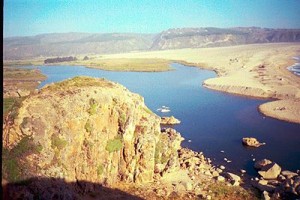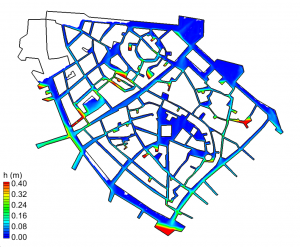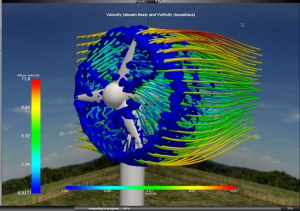Application Domains
Foreword
Coastal areas are increasingly threatened by global warming-induced sea level rise. At the same time, 60% of the world population lives in a 100km wide coastal strip (80% within 30km from the shore in French Brittany). This is why coastlines are concerned with many issues of various types: economical, ecological, social, political, etc. Coastal areas are natural interfaces between various media (e.g. wind/sea/sand/land). The physical processes acting on these media have very different time scales, hence the need to build complex systems coupling nonlinear partial differential equations and random processes to describe them.
The general scope of the LEMON project-team is to develop mathematical and computational methods for the modeling of coastal processes. The mathematical tools used are deterministic (Ordinary Differential Equations and/or Partial Differential Equations) and/or probabilistic (extreme value theory). Applications range from regional oceanography to coastal management, including risk assessment for natural hazards on the coastline (submersion and urban floods, tsunamis, pollution).
The team has three main scientific objectives:
- develop new models and advanced mathematical methods for inland flow processes;
- investigate the derivation and use of coupled models for marine and coastal processes;
- and develop theoretical methods to be used in the mathematical models serving the first two objectives.
The protection of coastal areas around the world has become a major concern, including within the scientific community. The coastline is defined as the physical separation between the sea or ocean on the one hand and the inland on the other, but these two worlds are in fact intertwined, which contributes to the difficulty of their modeling, both from a physical and statistical point of view.
Coastal Oceanography
 |
Wave propagation models in the nearshore zone have evolved significantly over the last 15 years, with contributions that increasingly take into account effects related to variations of bathymetry, hence the non-hydrostatic nature of the flow. These models, very specific to the coastal zone, must be able to be coupled (together and with external models) so as to allow wave propagation numerical models to be integrated into numerical forecasting platforms, both in oceanography and in flood risk management.
Back to top…
|
Urban Floods
|
Due to climate change and rising sea levels, more and more cities are facing the risk of flooding. Whether they are in coastal areas or near rivers, these areas, which are inherently highly artificial and therefore poorly resistant to rising water levels, require different types of numerical models for flood risk: accurate (and potentially costly) models for land use planning, but also fast models, which can be run in real time, for crisis management.
Back to top…
|
 |
Hazard and Risk Assessment
 |
Modeling hazard and risk assessment are at the heart of coastal science. Whether the events considered are of natural or anthropogenic origin, their economic, ecological or human impacts are too important to be neglected. By definition, the more extreme an event is, the lower its frequency of occurrence and therefore the less data available to characterize it. Hence the importance of using statistical tools dedicated to the modeling of extreme events, in order to provide risk management tools that are as safe and effective as possible.
Back to top…
|
Sustainable Energies
|
Renewable energies are an essential complement to energy sobriety and efficiency to offer a carbon neutral world. In coastal areas, energy can be captured from tide and currents or thanks to wind turbines, which can be installed both inland and at sea (floating or not). In order to optimise the location of the turbines (whatever they are) with regard to the power produced, two ingredients are essential and require very precise models: a knowledge of the resource on a fine scale as well as the control of the wake effect when we are interested in wind or tidal turbine farms.
Back to top…
|
 |








